The Eiffel Tower, Louvre, Arc de Triomphe, and Sacré Coeur are must-see landmarks in Paris that should not be missed. However, the city offers many other wonderful attractions to explore. After visiting these popular tourist sites, consider this one-day itinerary for your next trip to Paris.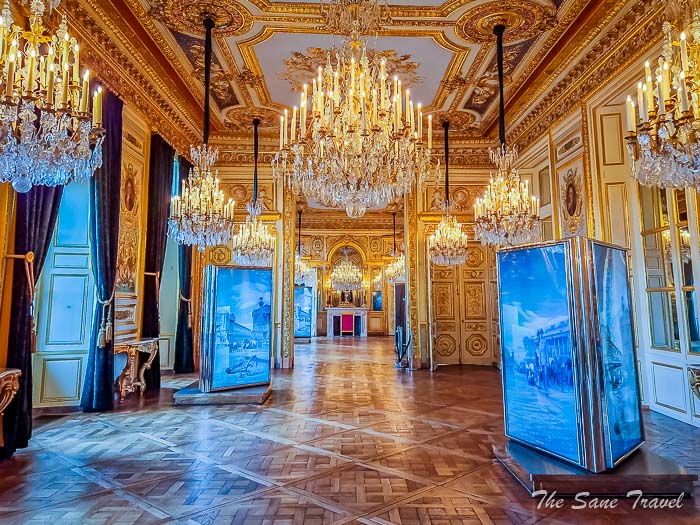
9.00 Arrival to Gare de Lyon
Store your luggage
This tour begins and ends at the Gare de Lyon train station for your convenience. Train services from Gare de Lyon operate routes to various French cities including Lyon, Marseille, Nice, Dijon, Mulhouse, Grenoble, and several destinations in the French Alps. Additionally, it provides easy access to Paris airports, Orly and Charles de Gaulle.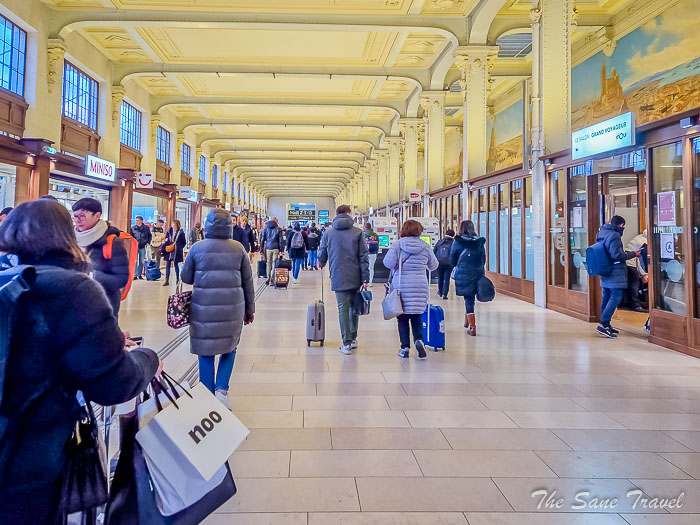 The first step is to store your luggage in the station's luggage locker, especially if you have just arrived in Paris and cannot check-in at your hotel yet. Signs throughout the station will guide you to the luggage locker area, which is located in Hall 3, underneath track N, on level -1 near the Rue de Bercy exit. Luggage can be stored for a maximum of 72 hours, with locker fees ranging from €5.50 to €9.50 per day, depending on the locker size. The price is fixed daily, regardless of how long you store your luggage.
The first step is to store your luggage in the station's luggage locker, especially if you have just arrived in Paris and cannot check-in at your hotel yet. Signs throughout the station will guide you to the luggage locker area, which is located in Hall 3, underneath track N, on level -1 near the Rue de Bercy exit. Luggage can be stored for a maximum of 72 hours, with locker fees ranging from €5.50 to €9.50 per day, depending on the locker size. The price is fixed daily, regardless of how long you store your luggage. 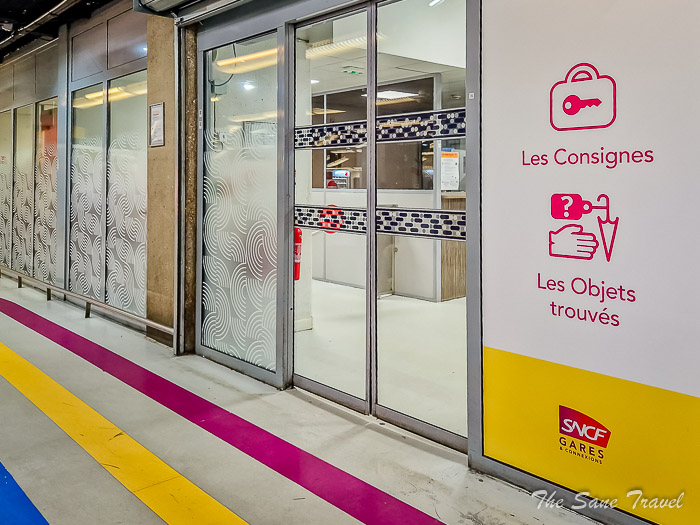 Once you have completed this step, head to your first sightseeing destination and enjoy a morning coffee.
Once you have completed this step, head to your first sightseeing destination and enjoy a morning coffee.
9.30–10.30 Have a cup of coffee at the bar lounge in Le Train Bleu.
Coffee at Le Train Bleu
Le Train Bleu, a well-known restaurant at Paris-Lyon Station, was established in 1900 as a station buffet for the Paris Exhibition. The railway company commissioned Marius Toudoire, the architect responsible for the Gare de Lyon’s clock tower and façade, to design an opulent and modern dining experience. Unveiled in 1901 by French President Émile Loubet, the buffet quickly became a popular spot among high society and artists. Regular patrons included Coco Chanel, Brigitte Bardot, Jean Cocteau, Colette, Salvador Dalí, Luis Buñuel, Jean Gabin, and Marcel Pagnot, among others. Le Train Bleu offers a bar lounge and a restaurant for guests to enjoy. Those who arrive early can relax with a coffee in the bar lounge and appreciate the beautiful interiors of the adjacent restaurant. The cosy and welcoming ambience of the bar area invites visitors to unwind at any hour, as the bar lounges are open from 7.30 am to 10.30 pm.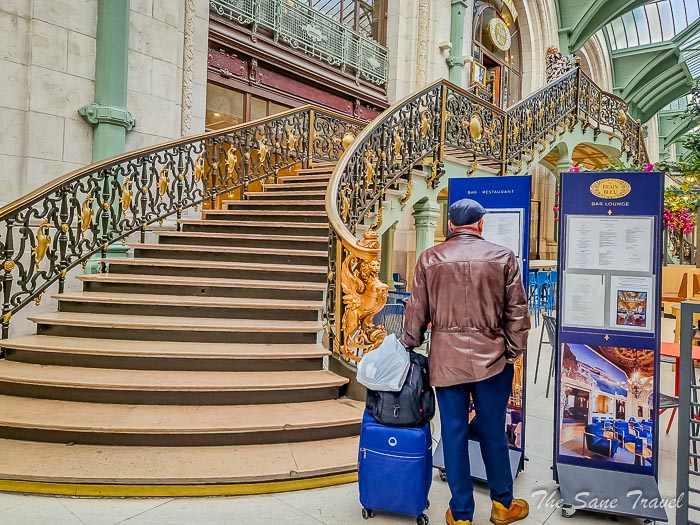
The restaurant is open daily for lunch from 11.15 am to 2.30 pm and for dinner from 7 pm to 10.30 pm. Le Train Bleu offers travellers and locals a timeless experience, evoking the beginning of a remarkable journey through France's most beautiful regions. In 1963, the buffet was renamed Le Train Bleu in homage to the Paris-Vintimille line established in 1868, a legendary train route that served towns along the French Riviera.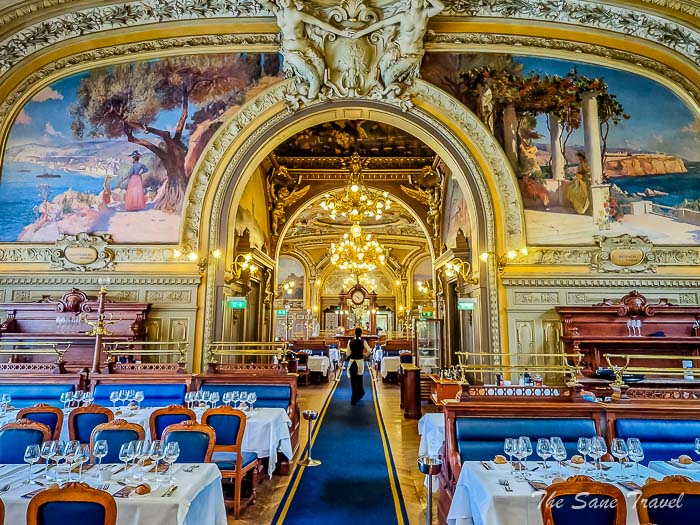
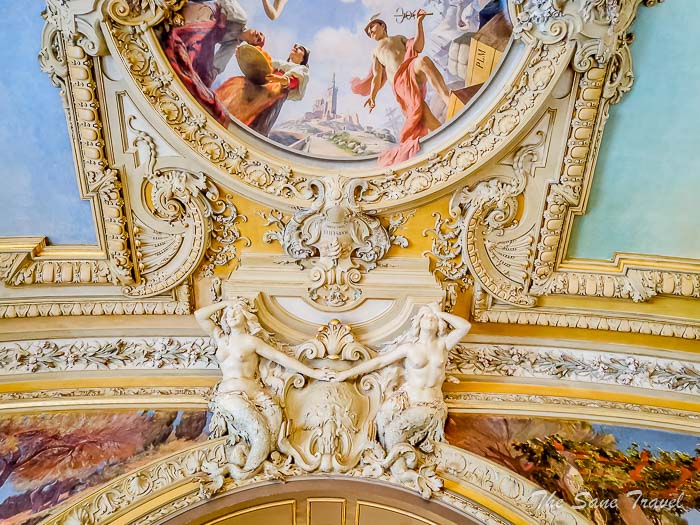
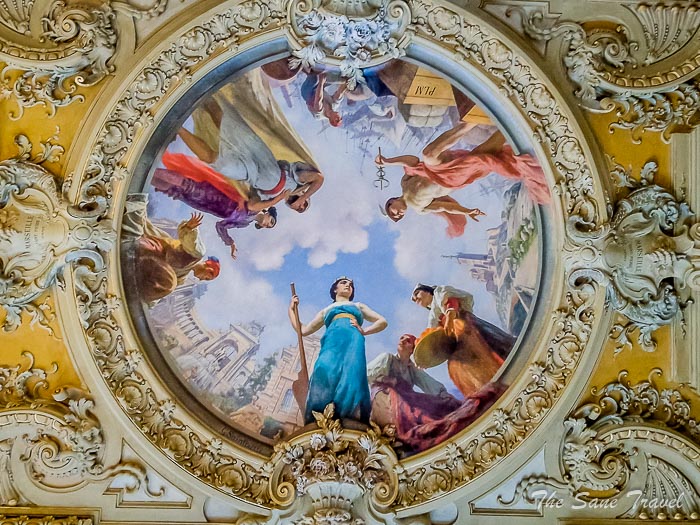 In 1972, some of Le Train Bleu's halls were designated as historical monuments, including the restaurant, the gold lounge, the Tunisian and Algerian lounges, as well as the passageways and their decor. The restaurant has also been featured in various films, such as Nikita and Place Vendôme.
In 1972, some of Le Train Bleu's halls were designated as historical monuments, including the restaurant, the gold lounge, the Tunisian and Algerian lounges, as well as the passageways and their decor. The restaurant has also been featured in various films, such as Nikita and Place Vendôme.
Be sure to admire the main entrance, clock tower, and façade of Gare de Lyon before heading to your next destination. 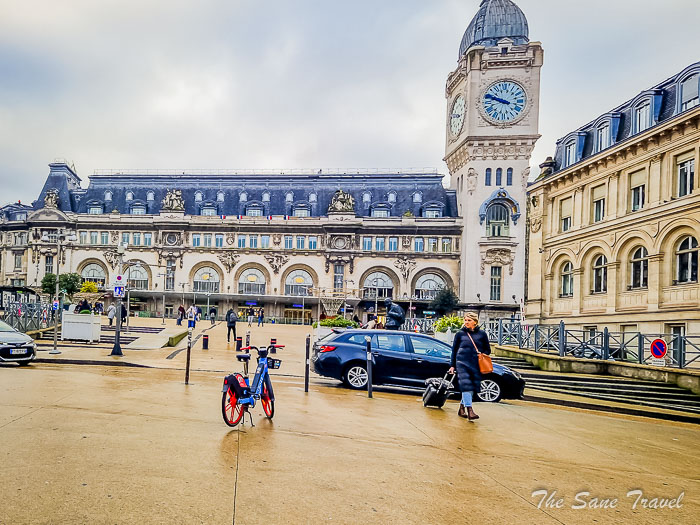 Notice the bronze statue outside of Gare de Lyon commemorating the Chinese labourers who served in World War I, with approximately 140,000 workers from Shandong province arriving in Europe between 1916 and 1918 to support the Allied forces. Tragically, around 20,000 of these workers lost their lives during the war.
Notice the bronze statue outside of Gare de Lyon commemorating the Chinese labourers who served in World War I, with approximately 140,000 workers from Shandong province arriving in Europe between 1916 and 1918 to support the Allied forces. Tragically, around 20,000 of these workers lost their lives during the war.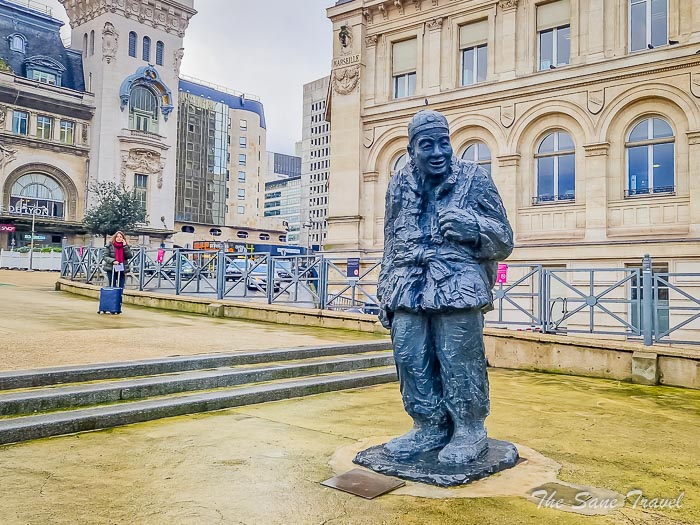
10.30–11.00 Travel to Palais Garnier via RER line A to Auber station, then take a short walk to the Opera House.
11.00–12.00 Palais Garnier
Palais Garnier
When in Paris, it is recommended to visit the Palais Garnier, also known as the Opera House. 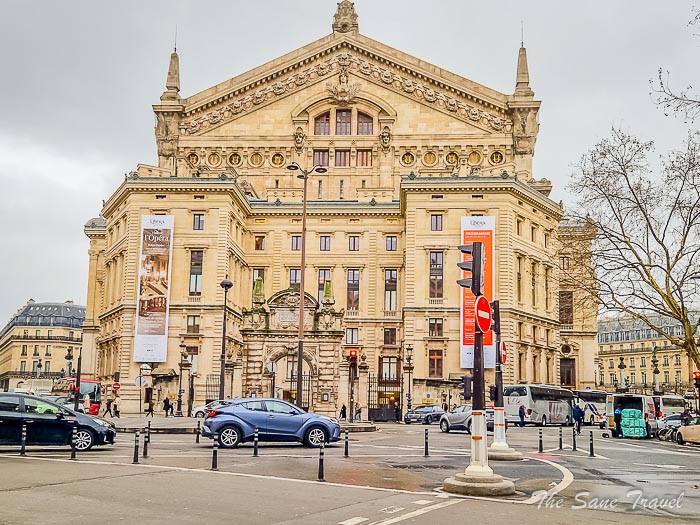
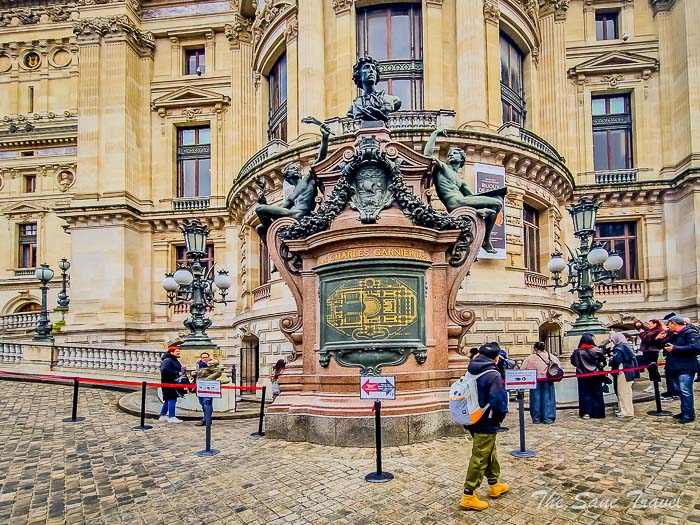 Designed by Charles Garnier, this Baroque-style masterpiece exudes over-the-top elegance and is considered one of the world's most renowned auditoriums, with 2,200 seats. The Opera House was part of the grand reconstruction of Paris initiated by Emperor Napoleon III, with Garnier winning the design competition in 1861. It was inaugurated in 1875 with a lavish gala. The building's interior showcases a magnificent main staircase, elaborate decorations, and a grand auditorium with five storeys of boxes.
Designed by Charles Garnier, this Baroque-style masterpiece exudes over-the-top elegance and is considered one of the world's most renowned auditoriums, with 2,200 seats. The Opera House was part of the grand reconstruction of Paris initiated by Emperor Napoleon III, with Garnier winning the design competition in 1861. It was inaugurated in 1875 with a lavish gala. The building's interior showcases a magnificent main staircase, elaborate decorations, and a grand auditorium with five storeys of boxes.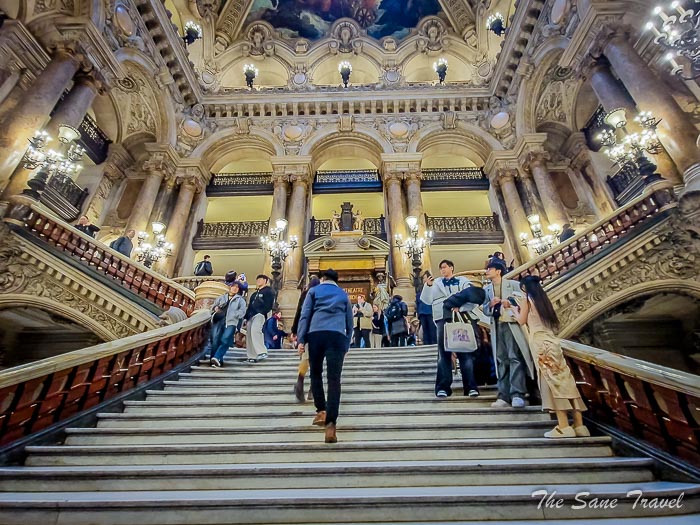
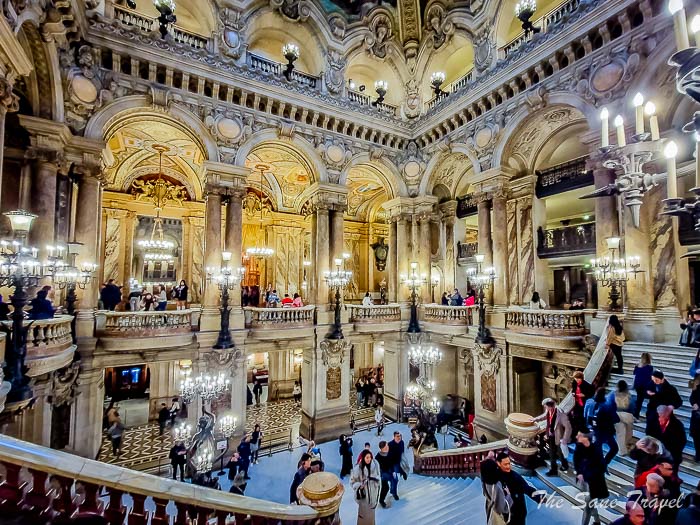
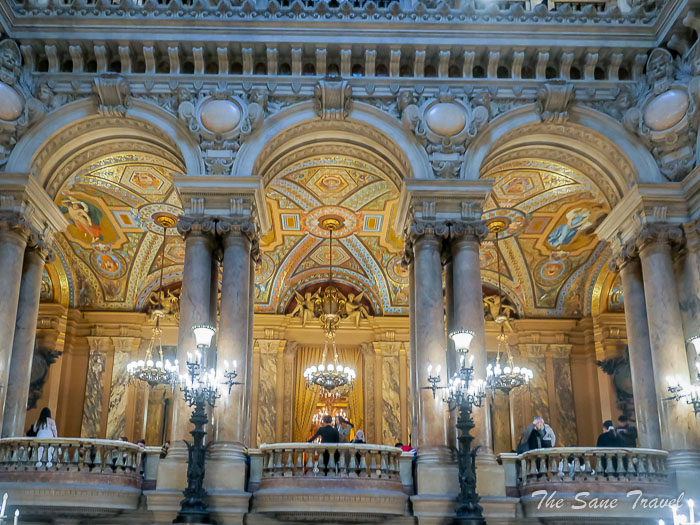 The Palais Garnier blends Neo-Baroque and Beaux-Arts architectural styles, featuring a famous 7-tonne chandelier designed by Garnier, which hangs from the ceiling. The famous Opera House served as the inspiration for the iconic musical Phantom of the Opera, which continues to be performed with great success in the city of London. The auditorium is praised for its exceptional acoustics, enhancing the quality of performances. The ceiling, originally painted by Lenepveu, was replaced in 1964 by Marc Chagall.
The Palais Garnier blends Neo-Baroque and Beaux-Arts architectural styles, featuring a famous 7-tonne chandelier designed by Garnier, which hangs from the ceiling. The famous Opera House served as the inspiration for the iconic musical Phantom of the Opera, which continues to be performed with great success in the city of London. The auditorium is praised for its exceptional acoustics, enhancing the quality of performances. The ceiling, originally painted by Lenepveu, was replaced in 1964 by Marc Chagall.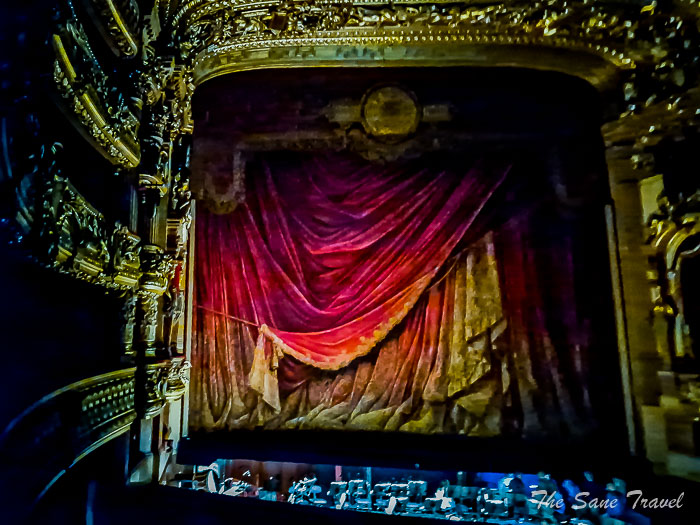
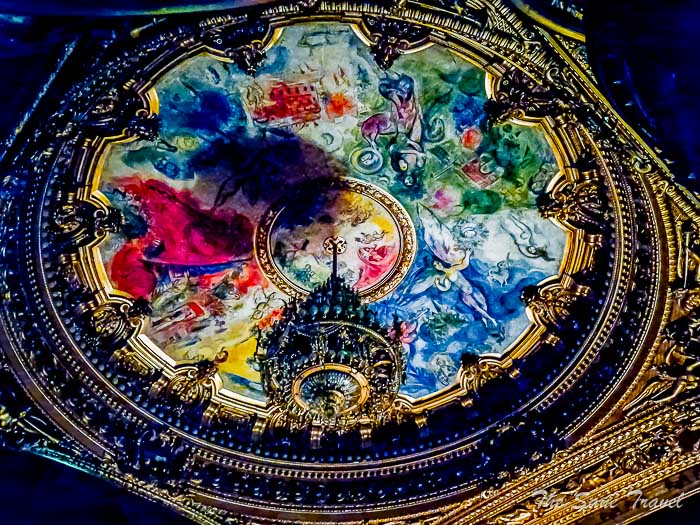 During my visit, the auditorium was open for entry but poorly lit, as were the images of its interior.
During my visit, the auditorium was open for entry but poorly lit, as were the images of its interior.
12.00–12.10 Proceed to the main building of Galeries Lafayette Haussmann
12.10–13.10 Galeries Lafayette Haussmann
Galeries Lafayette Haussmann
The itinerary includes a stop at Galeries Lafayette Haussmann – not for shopping, but to admire its stunning interior, especially the dome.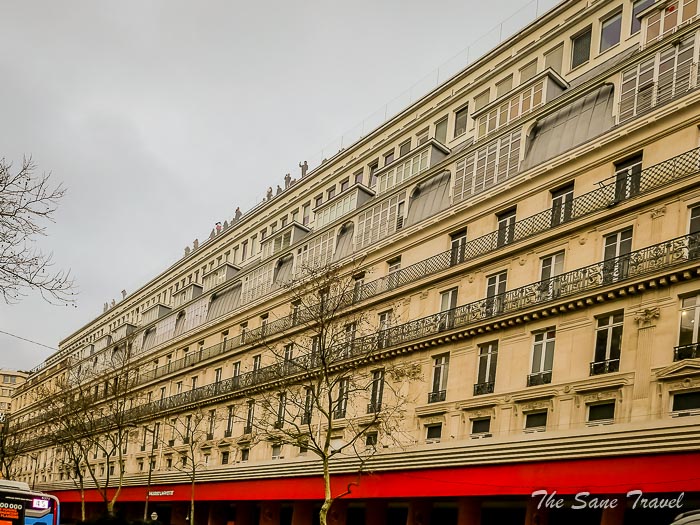
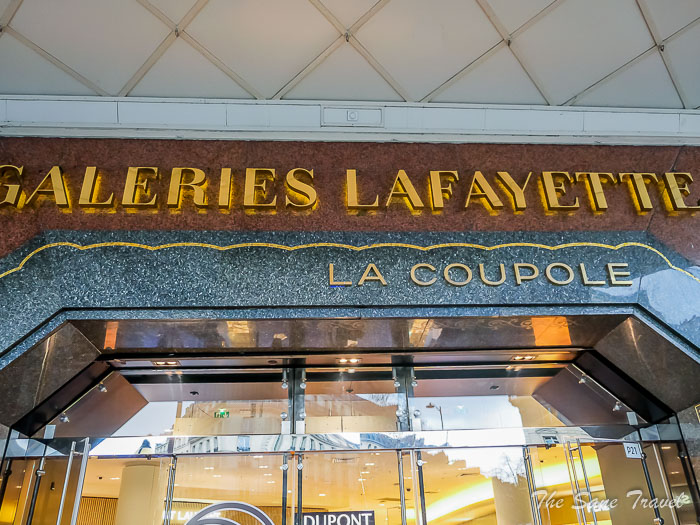 The glass viewing platform on the 3rd floor of the Coupole Store, with a 9-metre-long glass walkway suspended 16 metres in the air, offers fantastic photo opportunities. Access to the platform may require waiting, as a store employee limits entry to eight people for five minutes each. This prime location allows you to fully appreciate the Art Nouveau architectural beauty of Galeries Lafayette Coupole.
The glass viewing platform on the 3rd floor of the Coupole Store, with a 9-metre-long glass walkway suspended 16 metres in the air, offers fantastic photo opportunities. Access to the platform may require waiting, as a store employee limits entry to eight people for five minutes each. This prime location allows you to fully appreciate the Art Nouveau architectural beauty of Galeries Lafayette Coupole. 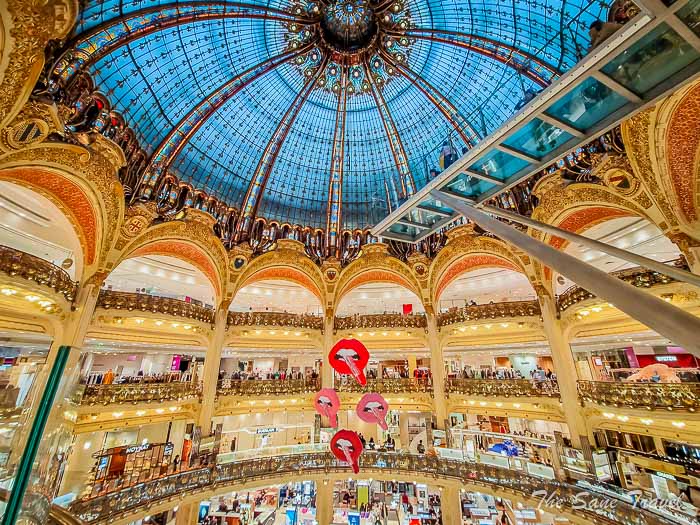
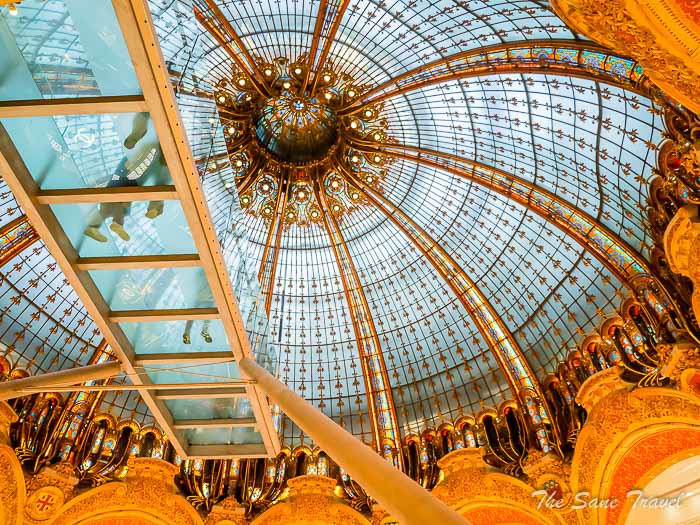
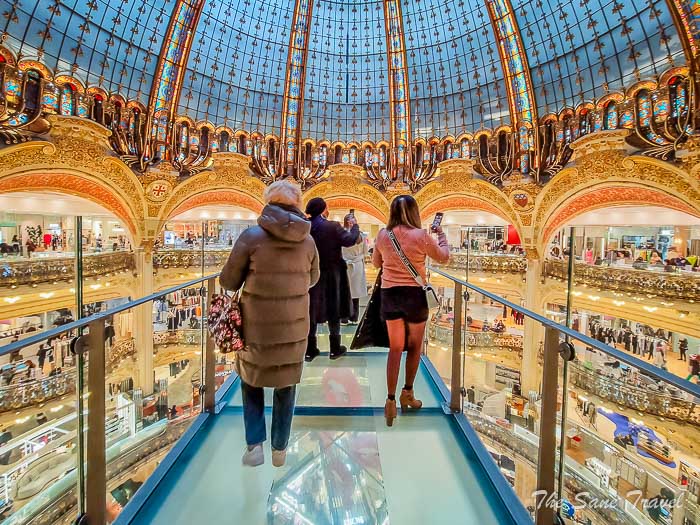
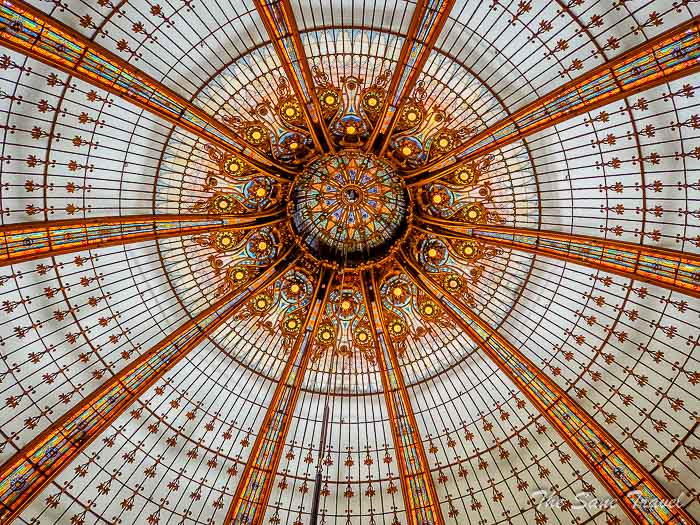 After walking the glass walkway, make your way to the rooftop for stunning views of Paris, including the Eiffel Tower and the Montmartre district. The rooftop also offers panoramic sights of iconic landmarks such as Palais Garnier and Notre Dame.
After walking the glass walkway, make your way to the rooftop for stunning views of Paris, including the Eiffel Tower and the Montmartre district. The rooftop also offers panoramic sights of iconic landmarks such as Palais Garnier and Notre Dame. 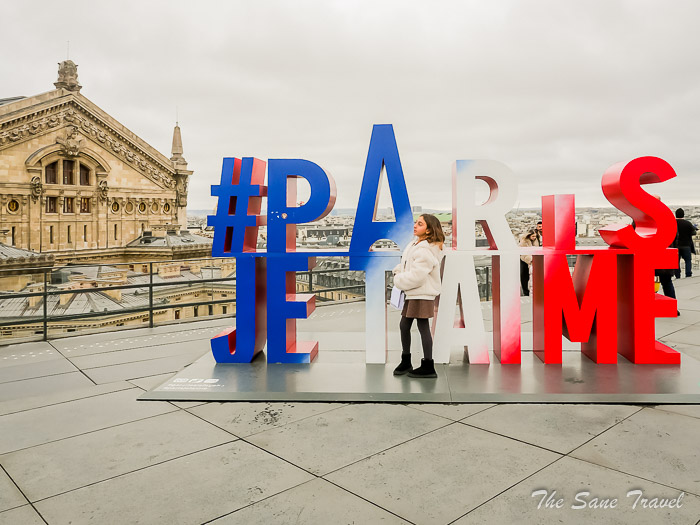
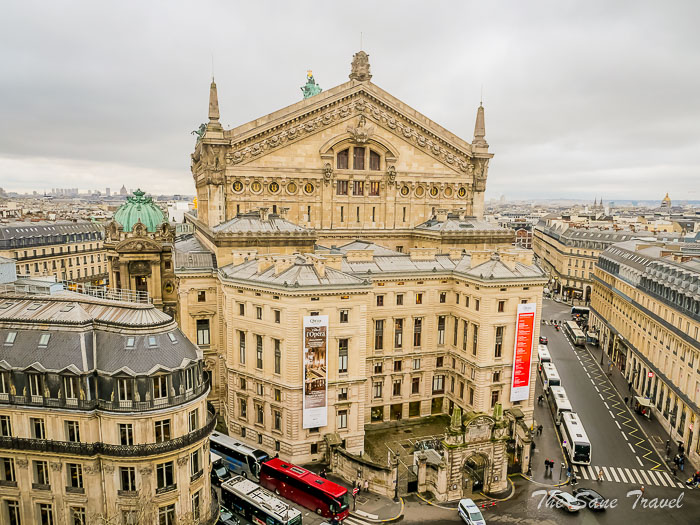 Open daily from 10 am to 8 pm, the terrace features pop-up restaurants serving delicious dishes during the warmer months.
Open daily from 10 am to 8 pm, the terrace features pop-up restaurants serving delicious dishes during the warmer months.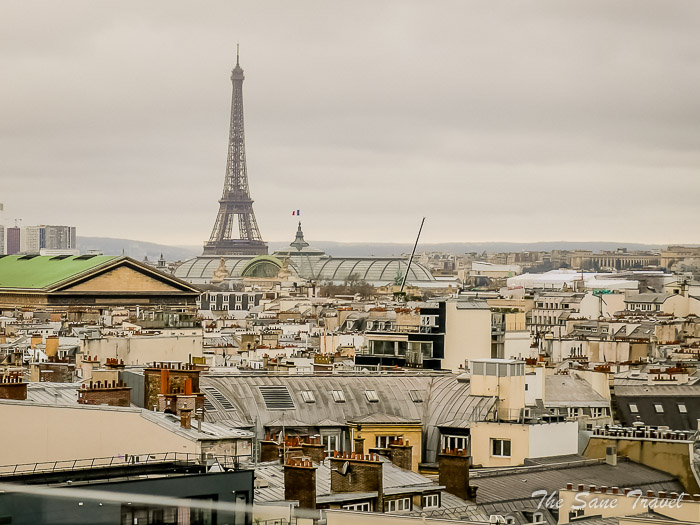
13.10–13.30 Walk to Hôtel de la Marine
13.30–14.30 Visit Hôtel de la Marine
First of all, what is a hotel in Paris?
For people like me, the word hôtel can sometimes be confusing. Originally, hôtel in French referred to a large and luxurious house, often belonging to nobles and royalty. This means that a building labelled Hôtel de... may not always be a hotel. For example, the official residence of the French Prime Minister is the Hôtel de Matignon. In the past, being invited to someone's hôtel meant visiting their house for dinner. Many grand hôtels have been converted into museums, libraries, or government buildings, while some remain privately owned.
Hôtel de la Marine
The Hôtel de la Marine, located in the Place de la Concorde in Paris, is a historic building designed by architect Ange-Jacques Gabriel and opened in 1774. Originally the home of the royal Garde-Meuble, it later served as the Ministry of the Navy until 2015. 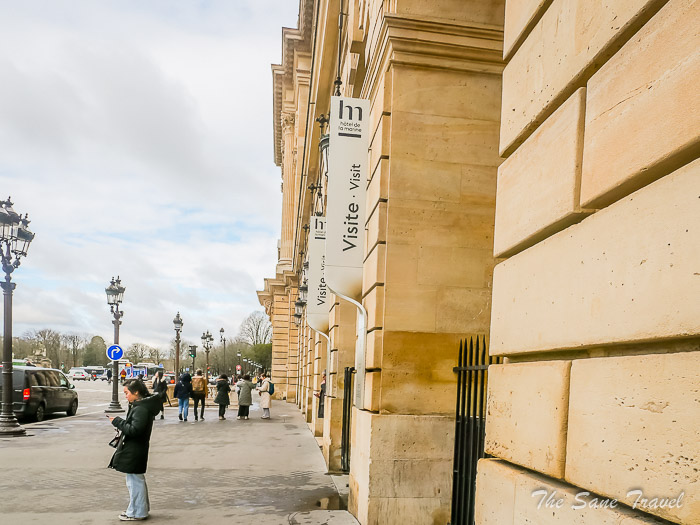 After a renovation from 2015 to 2021, the building now features restored 18th-century apartments and rooms once used by the French Navy.
After a renovation from 2015 to 2021, the building now features restored 18th-century apartments and rooms once used by the French Navy. 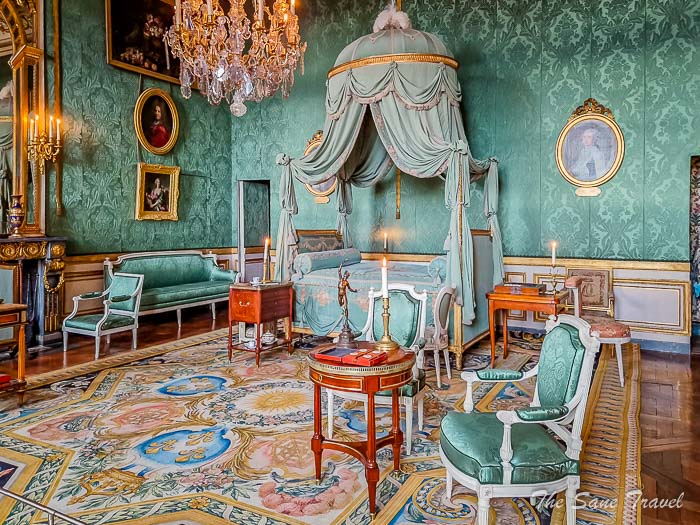

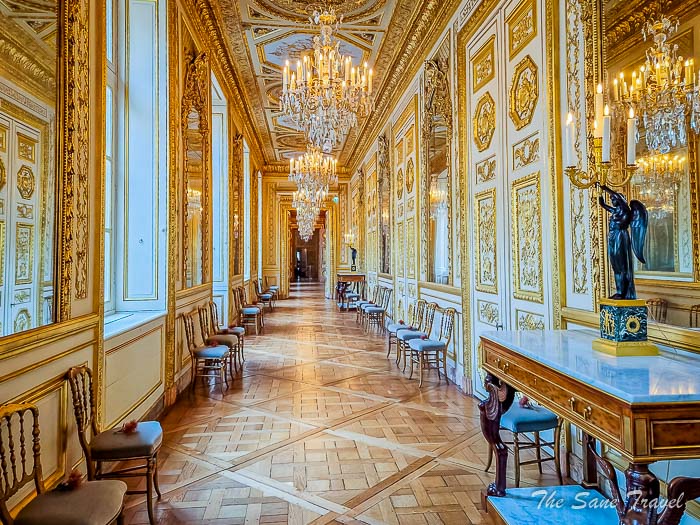
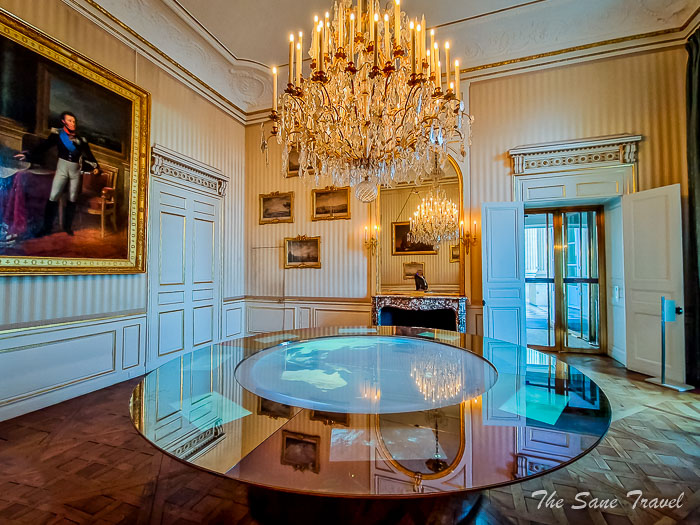 Visitors can enjoy stunning views of Place de la Concorde and experience an immersive tour with 3D audio effects using a Confidant headset.
Visitors can enjoy stunning views of Place de la Concorde and experience an immersive tour with 3D audio effects using a Confidant headset.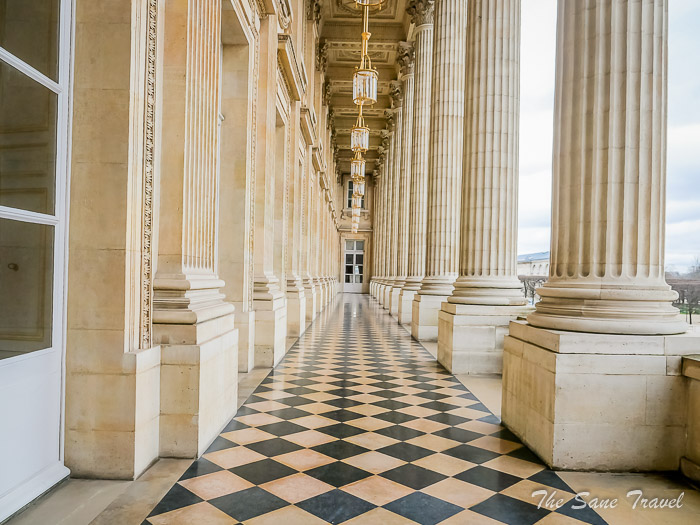
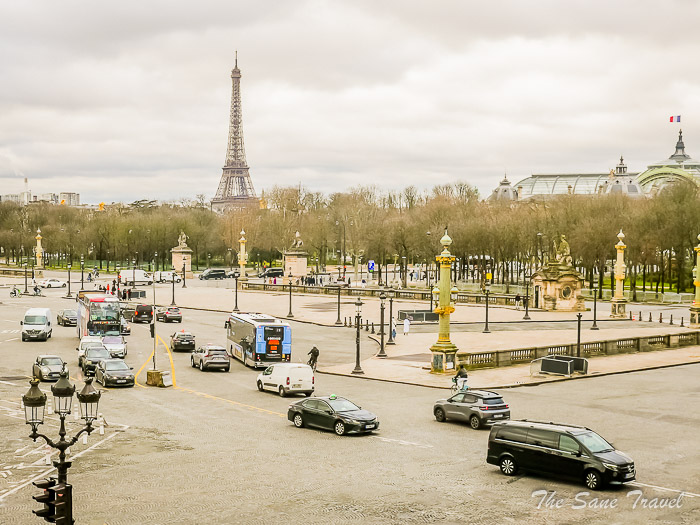
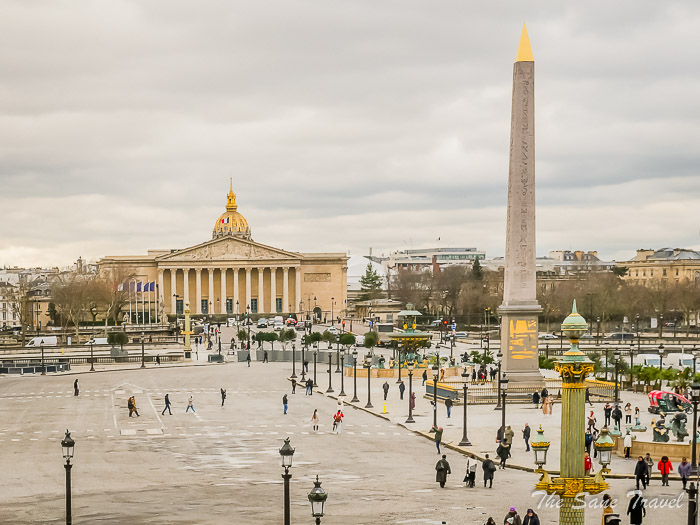 A range of tour choices is available, including a family-friendly tour that lasts between 30 and 90 minutes. Additionally, the Al Thani Collection is on display, showcasing international works of art from the collection of Sheik Hamad bin Abdullah Al Thani.
A range of tour choices is available, including a family-friendly tour that lasts between 30 and 90 minutes. Additionally, the Al Thani Collection is on display, showcasing international works of art from the collection of Sheik Hamad bin Abdullah Al Thani.
14.30–15.30 Lunch. Several lunch options are available nearby, including dining at Café Lapérouse within the Hôtel de la Marine building.
15.30–15.45 Walk to the Petit Palais
15.45–17.00 Petit Palais
Petit Palais
The Petit Palais is a museum located in Paris near the Champs-Élysées. It was built for the 1900 Paris Exhibition alongside the Grand Palais on Avenue Winston Churchill. Designed by Charles Girault, the building has a trapezoidal shape with four wings surrounding a semi-circular garden bordered by a decorated peristyle. Girault successfully blended traditional and modern architecture, allowing for a natural flow of visitors and bold openings onto the Champs-Elysées gardens and the inner courtyard.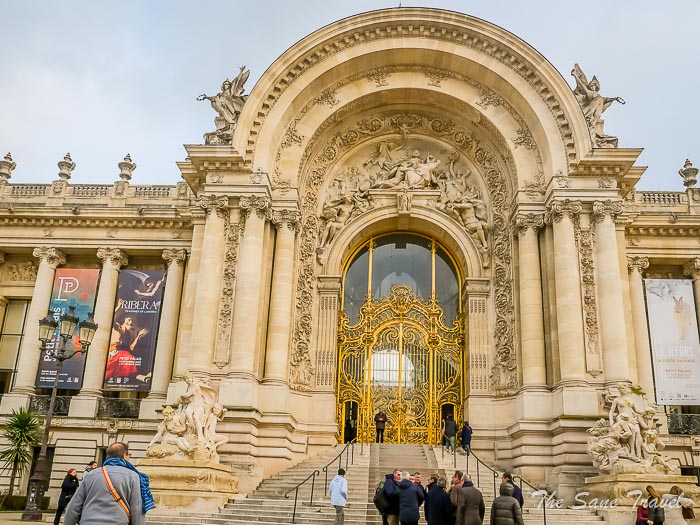
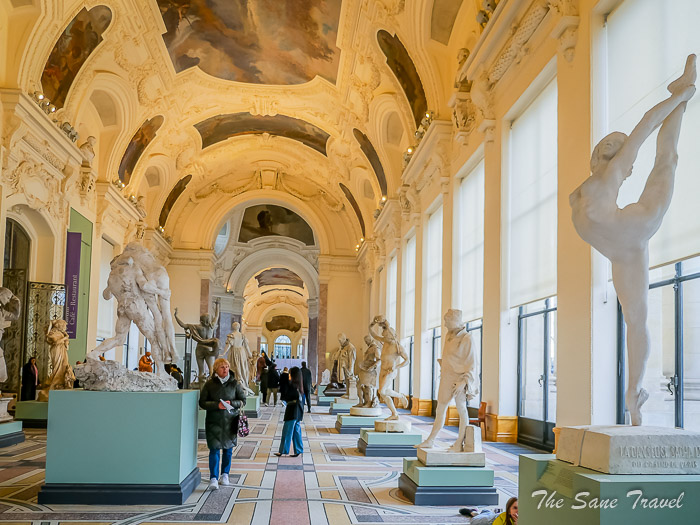
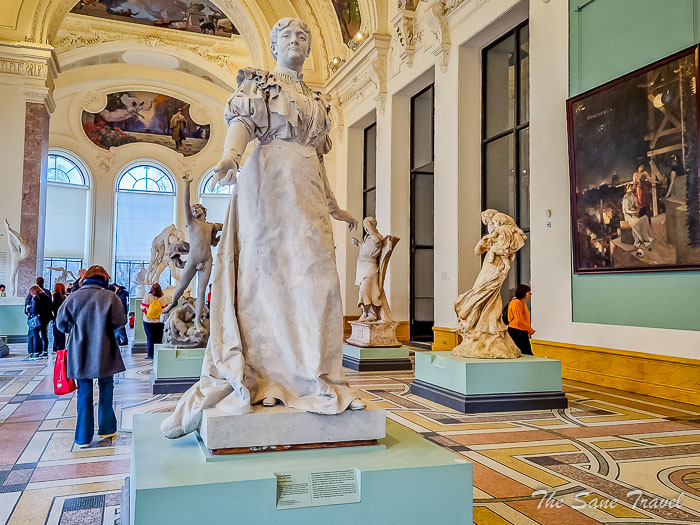
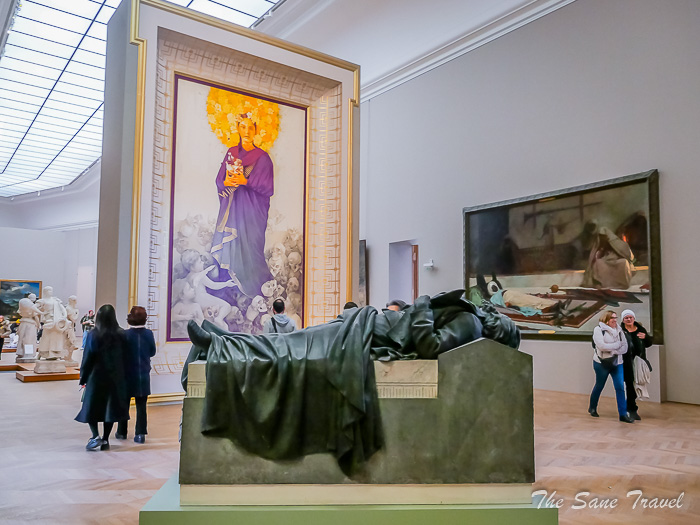
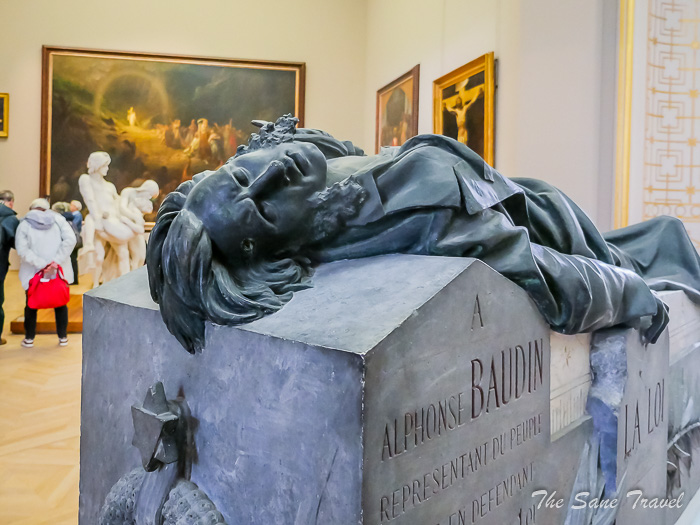 The museum houses the Musée des Beaux-Arts de la Ville de Paris and features paintings, sculptures, and decorative arts from the Renaissance to the 19th century. The building itself is a work of art, boasting a grand staircase, frescoes, and a garden café.
The museum houses the Musée des Beaux-Arts de la Ville de Paris and features paintings, sculptures, and decorative arts from the Renaissance to the 19th century. The building itself is a work of art, boasting a grand staircase, frescoes, and a garden café.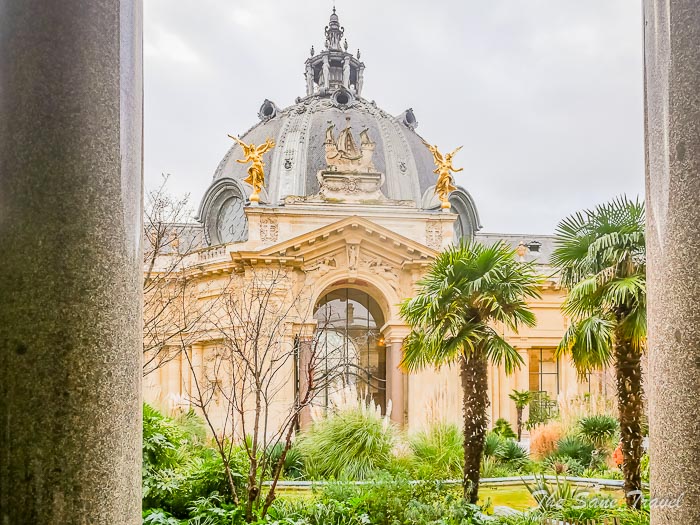 Among the collection's highlights are Greek vases, 17th-century Flemish and Dutch paintings, French paintings from the 18th and 19th centuries, and sculptures by Carpeaux, Carriès, and Dalou. The decorative arts collection spans from the Renaissance to the 1900s, featuring glassware by Gallé, jewellery by Fouquet and Lalique, and a dining room designed by Guimard. Additionally, the museum displays graphic arts, including engravings by Dürer, Rembrandt, and Callot. Admission to the permanent collection is free.
Among the collection's highlights are Greek vases, 17th-century Flemish and Dutch paintings, French paintings from the 18th and 19th centuries, and sculptures by Carpeaux, Carriès, and Dalou. The decorative arts collection spans from the Renaissance to the 1900s, featuring glassware by Gallé, jewellery by Fouquet and Lalique, and a dining room designed by Guimard. Additionally, the museum displays graphic arts, including engravings by Dürer, Rembrandt, and Callot. Admission to the permanent collection is free.
Useful tip: Grand Palais
If you visit Paris after June 2025 and have extra time, you might consider adding the nearby Grand Palais to your itinerary. This well-known Parisian landmark was built for the 1900 Paris Exhibition and is easily recognisable by its large glass dome and the French flag. An impressive architectural feat made of stone, steel, and glass, it has been designated a historical monument since 2000. 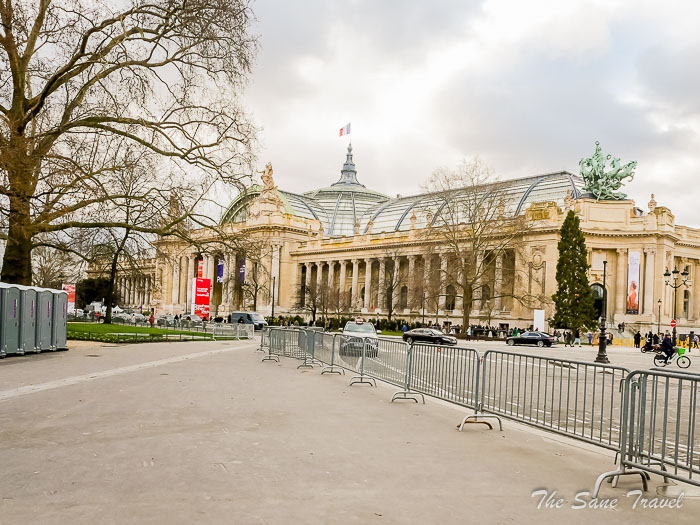
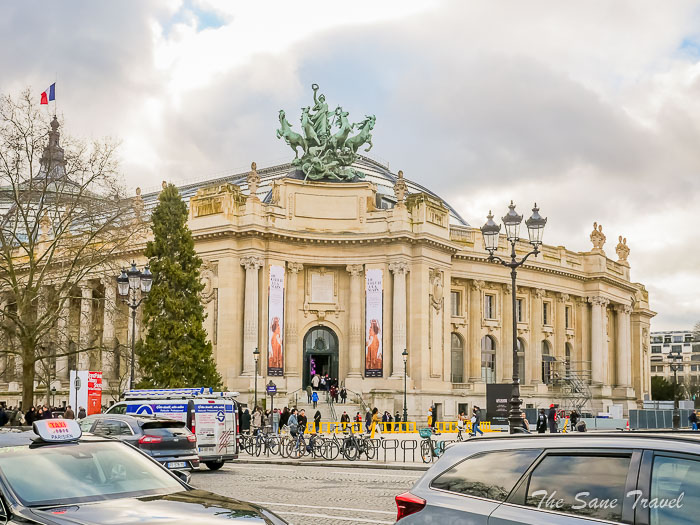 The Grand Palais consists of three main areas: the Nave, the National Galleries, and the Palais de la Découverte. The Nave, stretching 240 metres long, hosts a wide range of national and international events, including horse shows, contemporary art exhibitions, and fairs. In March 2021, the Grand Palais closed for major renovations to restore its original grandeur. As these renovations near completion, the Grand Palais is entering a new chapter in its history. During the Paris 2024 Olympic and Paralympic Games, the restored Nave served as the venue for fencing and taekwondo events. The full restoration is expected to be completed by June 2025.
The Grand Palais consists of three main areas: the Nave, the National Galleries, and the Palais de la Découverte. The Nave, stretching 240 metres long, hosts a wide range of national and international events, including horse shows, contemporary art exhibitions, and fairs. In March 2021, the Grand Palais closed for major renovations to restore its original grandeur. As these renovations near completion, the Grand Palais is entering a new chapter in its history. During the Paris 2024 Olympic and Paralympic Games, the restored Nave served as the venue for fencing and taekwondo events. The full restoration is expected to be completed by June 2025.
17.00–17.20 Return to Gare de Lyon by metro to retrieve your baggage, then proceed to your hotel.
Practical information
Having created and carried out this itinerary myself, I can confirm it is entirely doable. If you are not carrying luggage, you can skip the first step and avoid returning to Gare de Lyon at the end of the tour to collect it. I highly recommend booking tickets for Palais Garnier and Hôtel de la Marine online to keep your itinerary on track. I have attached a map displaying the locations covered in this itinerary, except for Gare de Lyon.
Like it? Pin it!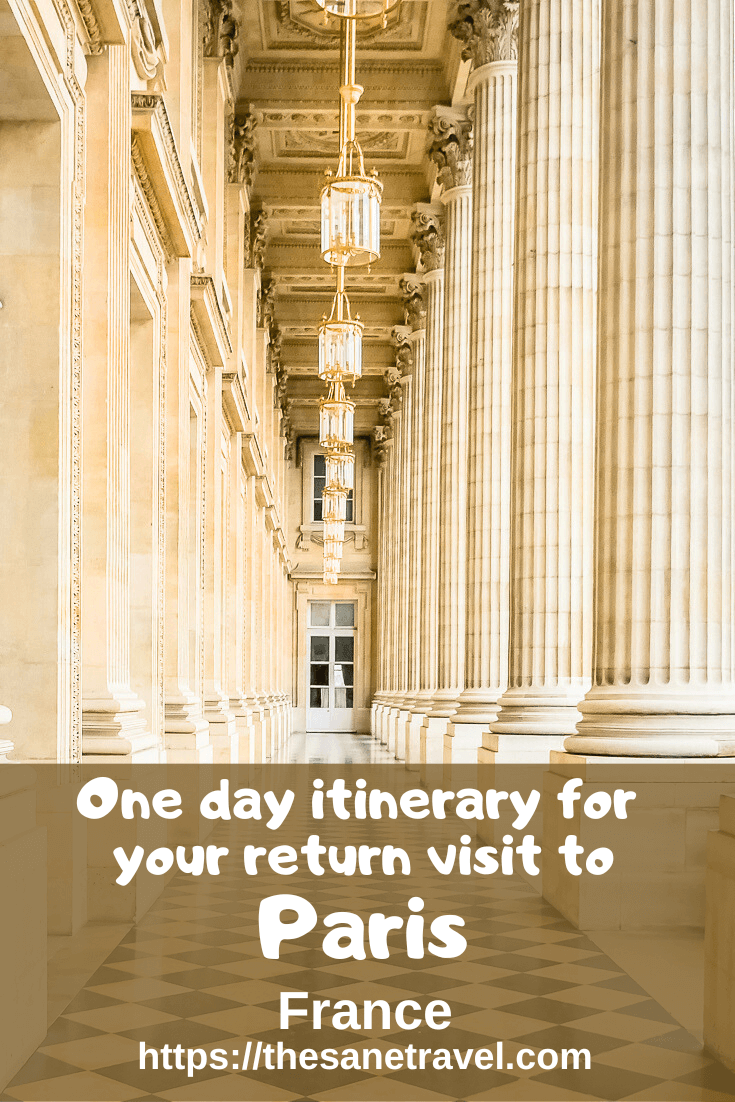
What did you think? Have you been to Paris? I would love to hear from you, so please add your comment below.
Author: Anita Sane

About the author
Anita is a part-time traveller, passionate photographer and a retired career woman from Latvia, travelling mostly solo for more than 15 years. She is a skilled travel planner who plans and executes her travels by herself. Anita wants to show you how to travel the world and open your mind to new experiences. Follow her on Facebook, Instagram, Pinterest, Twitter and Bloglovin.

Report
My comments